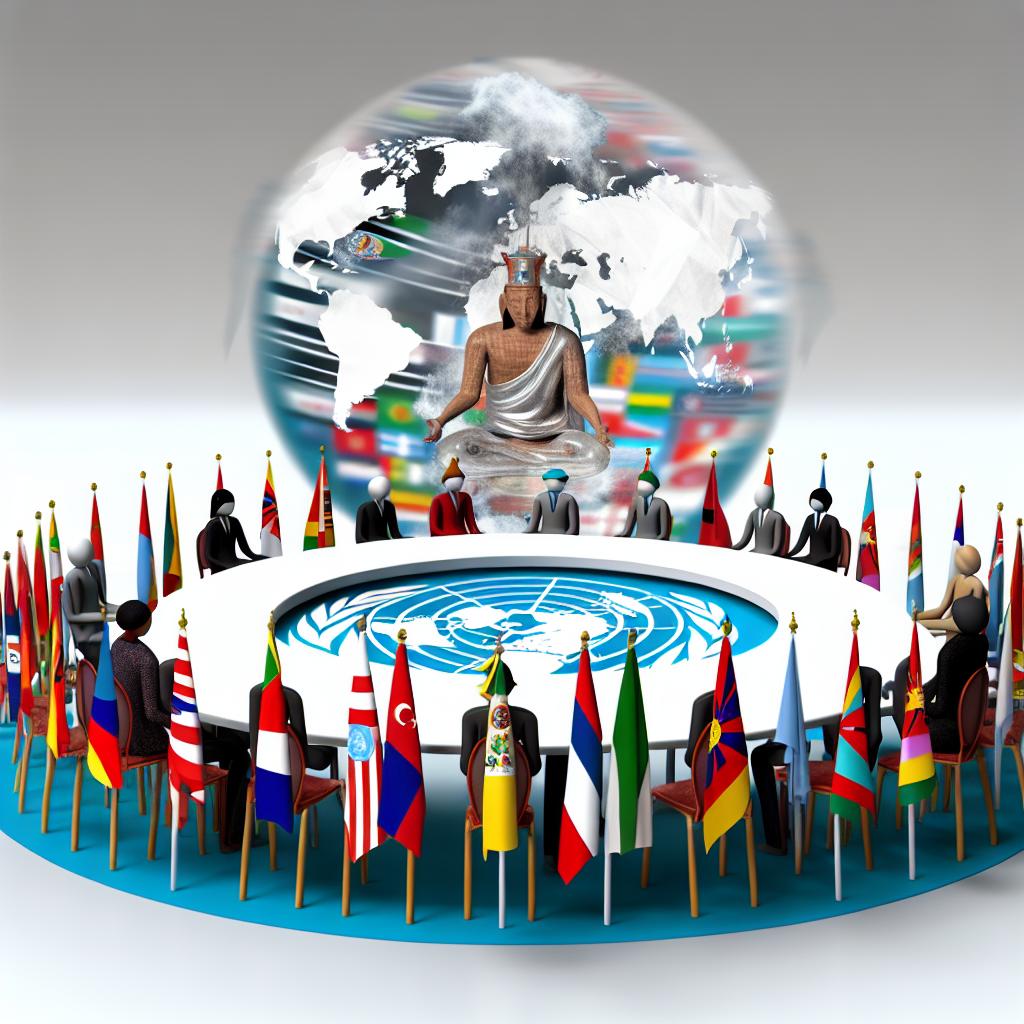The United Nations and the Tibetan Issue
The United Nations (UN) has assumed a multifaceted role in addressing the Tibetan issue over the years. This involvement is rooted in the complex interplay of cultural, political, and historical elements surrounding Tibet. Guided by its core mandate to promote international peace, security, and human rights, the UN continues to engage with the Tibetan issue with varying degrees of intensity.
Background
The global awareness of the Tibetan issue began in earnest in 1950 when the People’s Liberation Army of China entered Tibet. This incursion captured international attention due to Tibet’s ambiguous political status and the subsequent implications for its population. The situation was further exacerbated by the 1959 Tibetan uprising, which led to heightened concerns about the region’s governance and the rights of its people. These events marked the beginning of Tibet’s journey onto the international stage, primarily facilitated by the advocacy of various nations and global entities.
Initial Engagement
In its initial years of engagement, the UN focused largely on the adoption of resolutions in response to the evolving situation in Tibet. The first notable intervention occurred in 1959, facilitated by countries such as Ireland and Malaysia, which brought the matter before the UN. The resolutions adopted in 1961 served as a foundational response, emphasizing the need for China to cease actions that infringed upon the fundamental rights of the Tibetan people. This resolution also called for the preservation of Tibet’s unique cultural and religious life, setting the stage for continued international focus on these aspects. The emphasis on human rights and cultural preservation remained central to subsequent resolutions in 1965 and 1985, underlining the UN’s commitment to addressing these critical issues.
Human Rights Focus
The UN has predominantly approached the Tibetan issue through a human rights framework over the decades. Various entities within the UN, such as the Human Rights Council and the Office of the High Commissioner for Human Rights, have regularly raised concerns about alleged human rights violations in Tibet. These concerns include restrictions on freedoms related to religion, expression, and assembly. Through their mechanisms, these bodies strive to provide a detailed examination of the situation. Special rapporteurs have been appointed with specific mandates to comprehensively investigate and report on these concerns, further emphasizing the UN’s dedication to upholding human rights in Tibet.
Challenges in Diplomatic Engagement
The diplomatic landscape presents numerous challenges to the UN’s efforts in resolving the Tibetan issue. A significant barrier is the principle of sovereignty and non-interference, often cited by China to curtail external examination of its Tibet policies. China’s status as a permanent member of the UN Security Council adds another layer of complexity, as it has the ability to influence and potentially veto resolutions or interventions it deems intrusive. Consequently, the UN’s capacity to drive tangible change in Tibet is curtailed by these geopolitical constraints.
International Advocacy and Support
Despite these challenges, many member states persist in using the UN as a platform to urge dialogue between China and Tibetan representatives. Although these debates frequently fall short of generating actionable outcomes, they serve an essential role in sustaining international focus on the issue. The ongoing discussions at the UN stage indirectly sustain pressure on the parties involved, encouraging contemplation of negotiations. Thus, while the UN’s direct influence might be limited, it indirectly facilitates a conducive environment for potential future dialogue and resolution.
Current Stance
At present, the United Nations maintains its vigilance over the Tibetan issue through its established human rights mechanisms. Although recent years have not seen new resolutions emerging on the matter, the UN’s role in documenting and reporting human rights violations remains critical. This continuous documentation plays a pivotal role in sustaining global awareness and advocacy for peaceful solutions. The UN’s persistent focus ensures that the plight of the Tibetan people remains a topic of international concern, encouraging further dialogue and exploration of viable solutions.
Conclusion
In conclusion, the United Nations, constrained by political and diplomatic challenges, has carved out a limited but significant role in engaging with the Tibetan issue. Its focus on human rights and ongoing advocacy helps to perpetuate meaningful discourse on Tibet’s future. Although direct intervention remains challenging, the efforts of UN bodies in promoting dialogue and emphasizing the need for human rights observance are indispensable. The UN’s enduring commitment serves as a beacon for international efforts to ensure respect for Tibetan autonomy and cultural heritage, while advocating for a peaceful and negotiated resolution to this complex issue.

